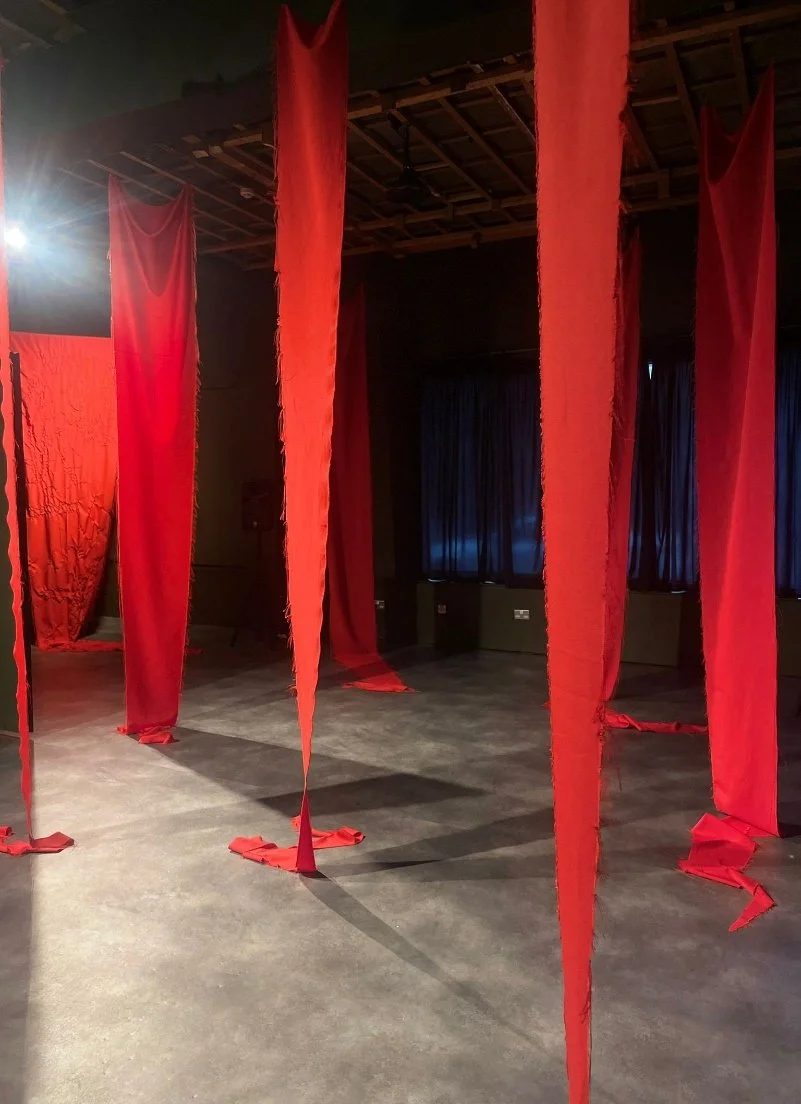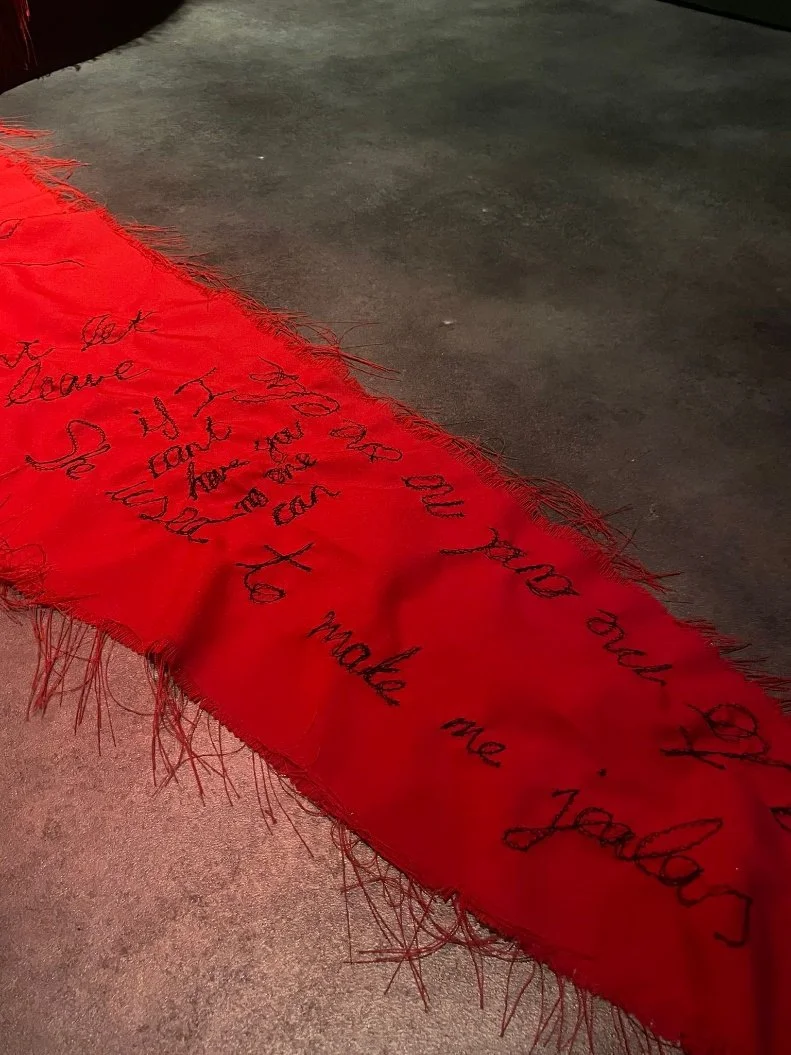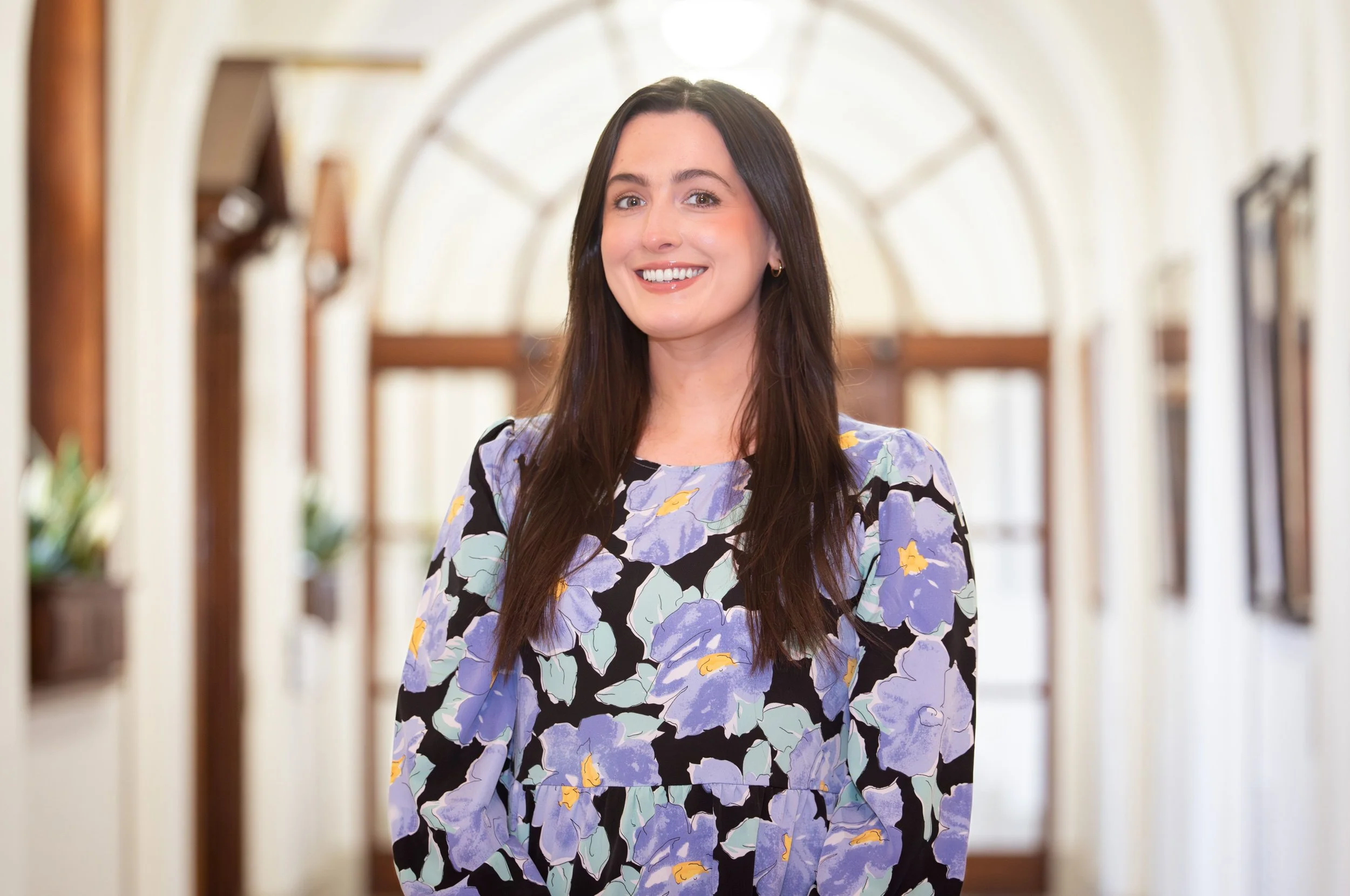BAG OF EXCUSES: EXPLORING FEMICIDE THROUGH ART
Bag of Excuses installation
Dr Sophie Doherty is a Lecturer in Law (Central Academic) and the Media Fellow for the Faculty of Business and Law at the Open University. Bag of Excuses installation photographs credit: Dr Sophie Doherty.
Actor Stephen Graham in Netflix series Adolescence
INTRODUCTION
THE critically acclaimed series, Adolescence, has shone a light, and encouraged much needed conversations on the issue of violence against women and girls, and in particular, femicide.
Johnston et al. (2024, p 53) explain that ‘[f]emicide as a concept was first proposed by author and activist Diana Russell in the late 1970s during an international convention on crimes against women’ and has since been the subject of much consciousness raising and contestation.
A widely accepted definition of femicide is ‘[g]ender-related killings of women and girls’ (United Nations Office on Drugs and Crime, 2023, p 7). The North-South Co-operation to Tackle Violence Against Women (2024) state that the North of Ireland has one of the highest rates of femicide in Europe, and is an all-island issue.
As Jane Caputi and Diana Russell (1990) explain, femicide is the ultimate end of the spectrum of violence against women and girls. Exploring this concept of a continuum of violence, Professor Jane Monckton-Smith OBE developed the ‘Homicide Timeline’, ‘a new framework for tracking homicide risk in cases of coercive control and stalking’ (Homicide Timeline UK, 2023). This Homicide Timeline was the source of inspiration for Gemma Mae Halligan and Sinéad O’Neill-Nicholl’s multimedia installation, Bag of Excuses: Exploring femicide (hereafter Bag of Excuses) (2025).
This article proposes that the arts can play an important role in relation to awareness of femicide. To start, the issue of femicide in Ireland will be contextualised, before turning to the Bag of Excuses exhibition in relation to the work of Professor Jane Monckton-Smith OBE. It is concluded that arts installations such as Bag of Excuses can provide essential interactions to help educate, acknowledge, and change narratives, and experiences of, violence against women and girls in Ireland and beyond.
VIOLENCE AGAINST WOMEN AND GIRLS IN IRELAND
The Ending Violence Against Women and Girls Strategic Framework report (2023, p 8) states that ‘98% of women in Northern Ireland have experienced at least one form of violence or abuse in their lifetime.’ Figures in the south of Ireland also raise concerns around the extent of violence against women and girls with Women’s Aid Ireland (2025) reporting that ‘35% of women in Ireland, more than 1 in 3, have experienced psychological, physical and/or sexual abuse from an intimate partner’ with figures released by An Garda Síochána showing that reports of domestic abuse ‘increased by 9% in 2024, totalling 65,114.
In relation to femicide, Geraldine Hanna, Victim of Crime Commissioner Designate for Northern Ireland, highlighted in her International Women’s Day 2025 address that since 2020, 25 women have been murdered in the North of Ireland (Commissioner for Victims of Crime Northern Ireland, 2025). Women’s Aid Ireland (2025) report that ‘[s]ince 1996, 275 women have died violently in the Republic of Ireland (up to 3rd March 2025).’ Most of these women knew their killer. A majority were killed in their own homes. Women and girls are socialised into believing that the biggest threat of violence comes from strange men at night outside their own homes, when in fact, statistics show that the most dangerous place for women and girls is within their own homes, with the biggest threat being from people they know.
However, as Women’s Aid report in their Responsible Reporting Matters (2025), when women are killed by partners- or people they know, there is often a tendency to victim blame and perpetrator excuse: ‘she drove him to it’, ‘he’s a good man’, ‘this was so out of character’, ‘he just snapped.’ This is presented, and often accepted, in society as legitimate justification for the murder of women and girls. Art can be a powerful method through which to address these damaging narratives surrounding violence against women and girls (Doherty, 2020) as demonstrated in Halligan and O’Neill-Nicholl’s Bag of Excuses.
BAG OF EXCUSES
To quote, ‘Bag of Excuses is a multi-media installation inspired by source material obtained from the BBC Sounds ‘Assume Nothing’ podcast, Femicide: Eight Steps to Stop a Murder’ (Vault, 2025) reflecting the work in progress of Halligan and O’Neill-Nicholl.
The BBC explain that Professor Monckton Smith guides listeners through a ‘homicide timeline’ i.e. the pattern of behaviour she has identified in domestic homicides that, if spotted early enough, could help vulnerable and at-risk women (BBC, 2024)
Bag of Excuses installation
Mirroring this in their installation, Halligan and O’Neill-Nicholl represent these stages visually through the installation of eight ceiling to floor bright red flags. On one of the flags, words and phrases were stitched into the blood-coloured fabric, reflecting those that abusers and enablers implement to justify abuse: ‘she used to push my buttons’; ‘she used to make me jealous’; ‘I couldn’t help it.’ The artists do not accept these phrases as excuses, instead, aligning them with red flags – a rejection of the normalcy of violence.
Furthermore, these words set upon and within the blood red cloth instil a sense of correlation between the legitimation and perpetuation of these excuses with the blood of the women who have been murdered – words can kill.
In the installation space, there was also an audio playing loudly in the room on repeat, with a video playing on repeat in a staged living room discussing the eight stages of abuse with a crescendo of violence represented. On the living room table beside the TV lay a small box of matches, representing the story of a woman whose partner threatened to set her on fire. The juxtaposition of the eight stages being represented audiovisually, and this reminder of the real, lived experiences of those who suffer from abuse was an intensely emotional, and overwhelming experience. It felt like you could not escape the suffering, and the signs.
Bag of Excuses installation
On speaking with the artists, Halligan and O’Neill-Nicholl explained that this was also felt by other viewers who attended the exhibition and the launch night, with people coming forward to the artists disclosing their experiences of abuse and relating their experiences to the eight stages depicted.
This shows the power of their work and how it provided an educative space whereby viewers were informed of the eight stages in a multimedia format that enabled victim-survivors to come forward, creating a space for voice, acknowledgement and perhaps a sense of justice that narratives are changing, that these societally accepted excuses are increasingly being rejected.
Justice for victim-survivors can be about having a voice, about education, prevention, compensation, acknowledgement, and changing narratives around violence against women and girls, alongside the pursuit of criminal justice. Art exhibitions can go some way in facilitating these (Doherty, 2020).
CONCLUSION
Bag of Excuses was an innovative example of lived experience informing a research lead art intervention that effectively challenges narratives around abuse and demonstrated how victim-survivors may find a sense of voice through art, where spaces are created to receive a sense of acknowledgement, and importantly to confront how we visualise, identify and relate to violence against women in girls.
Femicide is an all-island issue. Indeed, it is a global concern. To help combat violence against women and girls, there should be greater investment in understanding the experiences of victim-survivors and in challenging stigma, societal normalisation of misogyny, and education for all intersections of society on violence against women and girls.
This needs to be done through multiple methods, including collaborative research projects, through creative means, to educate, prevent, and change the narratives on sexual violence.
Society is out of excuses.
WIMB speaker Dr Sophie Doherty. Pic by Bernie McAllister at Belfast City Hall IWD week 2025.
A message from WIMB…
If you would like to collaborate with us, commission us, write for Women in Media Belfast, or let us know about your women focused events or projects please get in touch.





